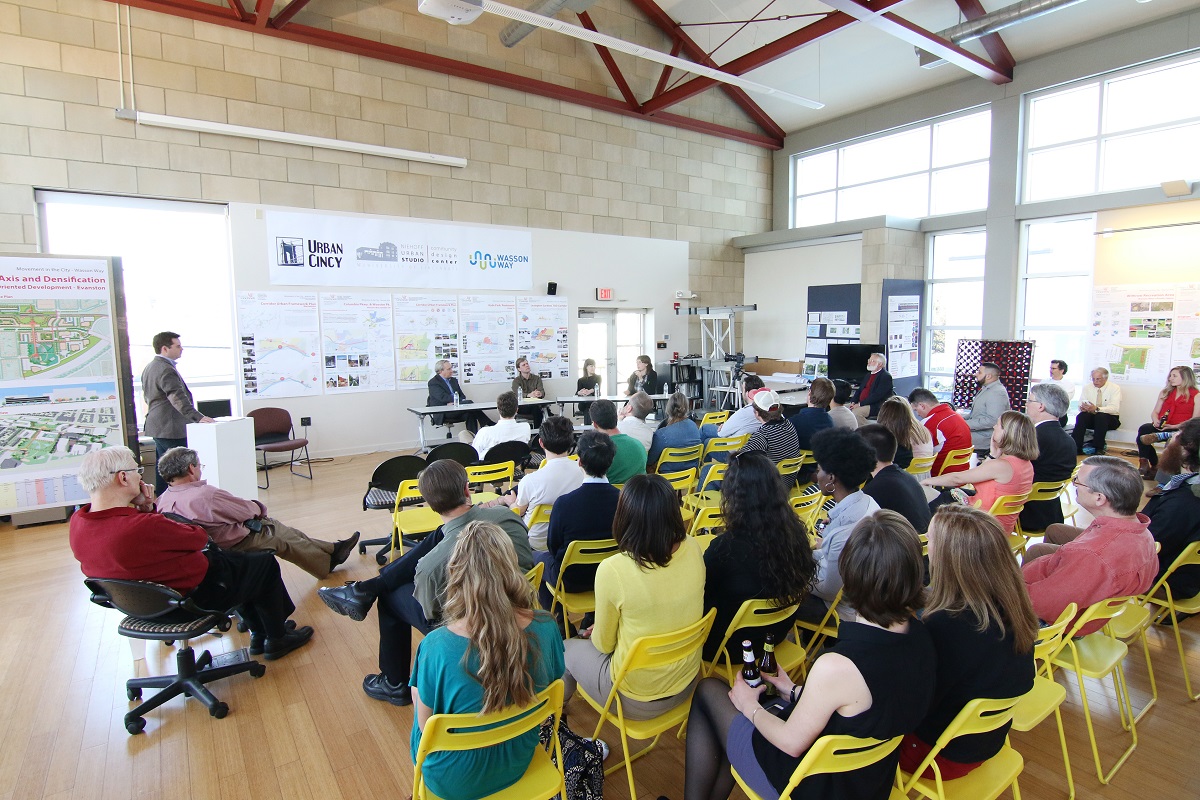As part of UrbanCincy‘s ongoing partnership with the University of Cincinnati’s Community Design Center, we gathered interested members of the public at the Niehoff Studio in Corryville on April 17 to view the work of students studying the Wasson Corridor.
As with previous events we have hosted at the Niehoff Studio, a capacity crowd attended to not only view the student work, but also participate in a panel discussion with regional experts on the topic. At this event, UrbanCincy‘s Jake Mecklenborg moderated the discussion.
The topic of discussion and the proposals put forth by the interdisciplinary students carried even greater weight as the City of Cincinnati allocated $1.9 million for a variety of bike projects, including $200,000 for the Wasson Way Trail. The City has also recently made an offer to purchase the Wasson Corridor for $2 million from Norfolk Southern who abandoned the rail line years ago.
While the Wasson Way Trail envisions a recreational bicycle and pedestrian trail running along the Wasson Corridor, many now view it as a component of a multi-modal transportation corridor that includes a long-planned light rail line.
Mayor John Cranley’s (D) administration appears to be focused on investing in recreational bike/ped trails, which is good, but the development of the Wasson Corridor should include both the proposed recreational trail and room for light rail tracks.
Fortunately, what was once viewed as a project that pitted light rail advocates against biking advocates has changed drastically since UrbanCincy‘s controversial editorial on the matter in 2012. There now appears to be broad consensus from both sides that the corridor should be developed in a comprehensive, multi-modal fashion.
